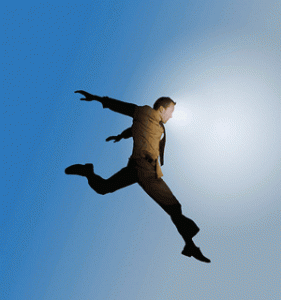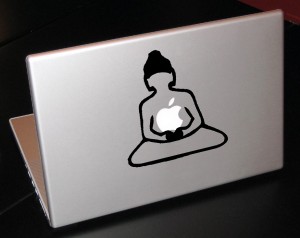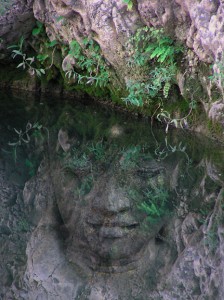
An excerpt from a teaching called Intimacy with the Path by Jetsunma Ahkon Lhamo
For those of us practicing the Buddha Dharma, there is the tendency to act and practice like new practitioners. When I say new practitioners, I don’t mean practitioners that have been practicing for only a week or six months or two years. We act like a culture of new practitioners, which we are. The Buddha Dharma has only recently been introduced into our culture. Our culture is more determined by Judeo-Christian thought than it is by Eastern thought and so many elements of our culture do not comfortably embrace the way the path is taught, including our language, and most especially the way that we live – our life style. We are in a culture that is materialistic and extremely competitive. These two ideas of competition and materialism are taught to us as virtues from childhood and so “collecting things” or “going somewhere” are very pivotal ways of viewing our progress through life. For those of us on the path, that becomes somewhat difficult, and we have to translate what is basically innate Eastern thought into a western context or culture. I think that I am good at that because I was born an American and I think that’s helpful, if one has some understanding of the path.
Our problem as we face either beginning on the path of Buddhadharma or continuing on the path, is the sense that the path has to become really married or bonded with the way that we utilize our mind and our perception. We have not really been able to do this yet, even if we’ve been practicing for some time, even if we are wearing the robes, even if we have a daily practice that we are extremely committed to. It tends to be the case that we don’t actually bond or marry with the path in a way that is truly intimate and lasting. Unfortunately, we tend to externalize the path.
What are the reasons for that and how does it manifest? First of all, in our culture and way of thinking, we externalize everything. This is not unusual. Everything that we see is a road in front of us. Of course this isn’t only typical of our culture. It’s typical of the way that human beings perceive things altogether, but particularly in this culture we think of things that must be accomplished and things that must be collected. We find ourselves facing something that is in front of us, a path that is in front of us. And although the teaching of the BuddhaDharma is extraordinarily different from spiritual and esoteric philosophy as we understand it in this Judeo-Christian society, we are not able to make that transition. We practice Buddhism like Christians, which is really not how Buddhism ought to be practiced at all.
If we understand the source of our misunderstanding and how it is that we externalize the path, we can begin to repair the damage and begin to rethink and reassess. The great thing about us is that we can learn. We are that particular unusual kind of computer, which can learn from its own programming, reassess and reevaluate. We are capable of that. If you watch us in our lives, you’d never know it, but we are capable of learning.
If you are practicing a method that did not arise from the mind of the Buddha, from supreme enlightenment, you are not practicing a path that can also result in supreme enlightenment, because the seed and the fruit have to match. An asparagus plant will not produce an apple. They have to match. It’s one of those fundamental, commonsensical, “2 + 2 = 4” kinds of reality that we like to conveniently leave out on a regular basis.
Why do we do that? Is it because we have a particular shtick that we need to fulfill about what religion is all about? Is it preconceived notions that we have? Yes, there are elements of that, that’s true, because we are intellectual people, we have formed ideas that are difficult to change once they are formed. We have the habit of clinging to ideas almost in the posture that if our ideas were to change, the result would be so mind-blowingly chaotic that surely we would die. We have this habit of wrapping ourselves around our ideas in a very firm way. Flexibility, of course, is an unheard-of skill.
That’s certainly one reason why it is difficult for us to think logically about the path. Another reason why it is so difficult is that, if you really examine us, we have very little familiarity with, or habits geared towards, really thinking something through, from cause to result, in any area of our lives. We like to take these flying leaps at reality. We like to take these great plunges thinking, “I want that and I’m here, so jump!” It’s that kind of thinking. Just jump! And jump again! But heaven forbid, don’t stop and think what cause would produce that result. We don’t have that habit.
We spend a good deal of our lives incapacitated in certain ways because each one of us has a particular problem to deal with. Some of us may have confused mental states. Some of us may have really strange habitual tendencies that produce unhappiness for us again and again. Many of us engage in patterns that we just can’t seem to shake and they always produce for us these habits that make us unhappy. When we make ourselves unhappy, we withdraw from that unhappiness and we whine and we blame the faith and we blame the people next to us. We take these flying leaps at our lives without really thinking through any kind of cause and effect relationship.
We have been given definite teachings on what kind of virtue and activities produce happiness, but we don’t want to practice virtue. We want to take flying leaps. We’re used to it and we don’t want to change. Regarding the path, it’s the same way. We see the path as being in front of us. It has certain characteristics, and so we see ourselves as separate from that and we take a flying leap in that general direction, without thinking out what is original cause, what is the basis, what is the method. What is the result, and how to really reason that through. We don’t seem to be able to do that. We seem to like to take these flying leaps.
Oddly enough, we expect that these dramatic, utterly unfounded and ungrounded flying leaps are going to make us happy. So we spend most of our lives just thrashing and flailing around.
In most regards, we don’t have the habit to understand the relationship between cause and result. It’s a particular kind of delusion that seems to go hand-in-glove with our human reality. When it comes time for us to really become intimate with and marry into the path, we look around for some way to do that, and the difficulty is obvious.
For many of us who have been practicing for some time, when we engage in the path we will try to make the path its own satisfaction. If we understood the basis for the path, and what the fundamental underlying ground of the path actually is, and what the result of practicing the path in a certain way will be—not because it’s magic, not because the signs point in that direction, not because of superstition, but because ground and result cannot be separated—we would begin to understand that in fact, under those conditions, the path disappears.
The path as a separate entity then doesn’t exist, not in the way that we understand it. It becomes inseparable from our own primordial wisdom nature, our own Buddhahood in its causative, seed form, and it becomes completely inseparable from the full-blown result of Buddhahood, actual awakening. If you understood this, you would not be engaged in thinking, the way we do now, “Okay, today I’m really going to get into my practice. So instead of doing an hour of practice I’m going to do two hours.” What kind of thinking is that? I mean, yeah, at some point you might have to decide how much time you have to put into it, but that’s not what it’s about. That’s not going to make a bit of difference if that’s the approach.
The kind of thinking that we have now also is “I’ve been out of it with my practice and so now I have to get back into my practice.” Even that kind of thinking is deluded thinking. To get back into your practice means that you’ve walked away from something that is infinitely connected, completely inseparable from that which is your nature. You can’t walk away from that. No matter where you go, there it is.
© Jetsunma Ahkön Lhamo









